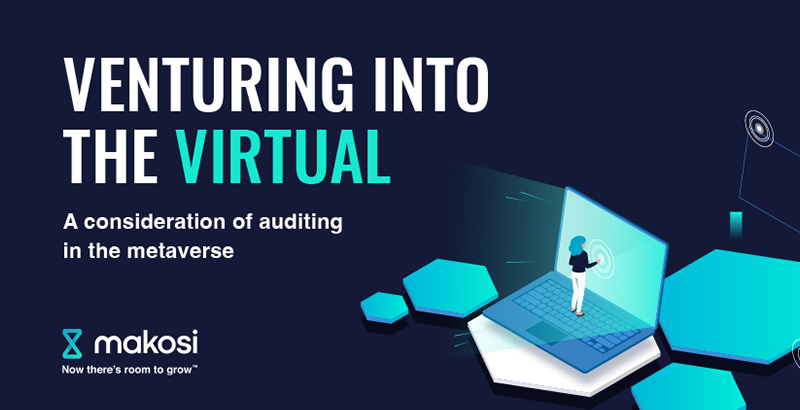Introduction
Suppose a time traveler strode into your office in February 2020 and informed you that within 90 days (or less), the global workforce infrastructure would dramatically shift. Organizations across sectors and industries would encourage their employees to work from home. It would have seemed inconceivable. But that’s exactly what’s unfolding as policymakers and corporate leaders grapple with social safety measures in the wake of coronavirus. And things may never return to the way they were before.
It’s said that adversity doesn’t build character; it reveals it. Similarly, this global catastrophe has revealed the resilience, flexibility, and drive of the modern workforce. As workers across the nation adapt to new schedules, new workspaces, and new technologies, it’s possible that we’re witnessing the death of the traditional office and unprecedented digital empowerment of skilled labor.
As you read on you’ll find:
- A discussion on the viability of remote working across various industries, including public accounting.
- The social and economic benefits of digital workforce flexibility
- Predictions about the permanent impact of COVID-19 on the modern workforce
- Considerations for the future of work
Is the office archaic?
During a now-legendary commencement speech, author David Foster Wallace used a parable to show how difficult it is for us to question our perceived realities. In the speech, he explained:
There are these two young fish swimming along and they happen to meet an older fish swimming the other way, who nods at them and says “Morning, boys. How’s the water?” And the two young fish swim on for a bit, and then eventually one of them looks over at the other and goes, “What the hell is water?”
There’s no denying that the modern workforce is “swimming,” so to speak, in office culture. Offices serve a necessary function. They’re where we hold meetings, meet with coworkers, and get work done. Or are they?
While some sectors and industries ground to an abrupt stop at the beginning of the global pandemic, others scrambled to find alternative ways to work. Among the latter were tech companies, creative agencies, and companies—both large and small—that don’t rely on face-to-face interactions. Abruptly, millions of American workers plunged into the world of remote work.
While the results of this global experiment are still pending, a nationwide survey of remote workers by Slack shows how companies and employees across knowledge work industries are responding.
The cross-industry impacts
As of March 27, when Slack completed their poll, 19 million American workers had begun working remotely. That's nearly a quarter of all knowledge workers in the United States, a number expected to climb through April and May. As human resource departments scrambled to create contingency plans, workers across the nation adjusted to the pros and cons of working from home.
As you’d expect, the impact varies across industries. The report states, “The data shows that workers in fields such as health care, research, operations, education, and customer support are the most likely to say that it’s either impossible or difficult to work from home, while those in business development, product or program management and IT find it much easier to do so.” Among the 3,000 respondents surveyed, workers in Accounting & Finance, Business Development, and Project Management were among those most likely to report that they could work from home with little to no difficulty.
Perceived hurdles to widespread adoption of WFH
Still, there’s a stigma to remote work that many of those in top management can’t seem to shake. These primarily include concerns about productivity, supervisors who are uncomfortable monitoring off-site workers, and training difficulties.
For these beliefs to change, as off-site employees become an increasingly common part of the corporate workforce, managers need to develop and more strategically deploy so-called “soft skills” that support communication and trust. They’ll also need to get rid of the assumption that strict monitoring leads to higher productivity.
Other considerations include the availability of technology and equipment required to power home offices effectively. For workers with limited connectivity, productivity will undoubtedly take a hit. Plus, many of the newly-remote workers don’t have access to the same in-office technologies they’re accustomed to.
The social and economic benefits of a remote workforce
But even before the pandemic, younger generations of workers were gravitating towards remote positions. According to an article by Fast Company, “From 2005 until 2017, the United States has experienced a 159% increase in remote work. And while there were 3.9 million American satellite workers in 2015, that number is 4.7 million today—or 3.4% of the overall population.” And that’s still just a fraction of the roughly 16 million who are working from home thanks to COVID-19.
The primary benefit of working remotely? A flexible and fluid workday, something that 75% of Millennial workers want. In a Deloitte survey, more than half of the respondents said that remote work opportunities boosted productivity, and three quarters said they’d prefer to have more opportunities to work remotely. And this flexibility may be the fastest way for companies to secure their loyalty. Plus, by offering flexible working schedules and telecommute options, businesses may be able to widen the pool of talent, especially for hard-to-fill roles.
The opportunity to work from home levels the playing field
One idea that has emerged is that work-from-home levels the playing field. Consider, for example, parents of young children who are suddenly on full-time parent duty as schools close their doors. Or those who are caring for parents, partners, and other coronavirus patients. To keep the workforce active, many companies are implementing flexible work hours and more forgiving schedules.
But what about the workers who have quietly dealt with these same obstacles for years?
After all, there’s inherent privilege in the unquestioned acceptance of offices as normal. As Johnathan Nightingale writes for Medium, “remote work is cheaper, more flexible, and more accessible to people with disabilities that make commuting a challenge. When you demand in-office work, you give advantage to people with wealth, mobility, and a lack of outside commitments.”
This experiment in widespread remote work may inspire us to consider how (and where) we work with greater empathy. In addition to showing us that flexibility is possible, it might also show us that it’s necessary.
Predicting the lasting impact of COVID-19 on remote workers
Although at this point, working from home is mostly viewed as a temporary measure, experts believe it may become the norm even as the states relax their stay-at-home orders.
As Greg Caplan, CEO of Remote Year, notes in an article for Fast Company, “Coronavirus is going to expose more people to working remotely than ever.” He says, “Most people will see that it is very possible and start to grow accustomed to the benefits of [remote work], including autonomy, no commute, and less distractions than open offices. Companies that don’t allow remote work already are going to have to continue supporting it going forward, now that they have proven to themselves that it works.”
Work-from-home flexibility was becoming increasingly important well before coronavirus. According to March 2019 findings from the International Workplace Group, 80% of respondents would accept a job with a flexible work-from-home policy instead of one that doesn’t. We predict this number will continue to grow, and workplace flexibility will give recruiters an edge.
But it’s not just about employee satisfaction. It’s about adaptability and embracing the future of work. “For companies and businesses who are just now navigating the challenges of remote work, they will perhaps bolster their flexibility options, improve their technology and cybersecurity, and take a second look at their current operational processes,” Heinan Landa, the CEO of Optimal Networks, says. “This is, in fact, a wake-up call for companies who have never had to deal with something like this before. For some, perhaps the outbreak will prove that remote work is a very real option and one essential to a business continuity plan.”
Remote work was thrust upon us overnight. But great remote work takes time to build.
Despite workers’ desire for greater flexibility and work-from-home capabilities, the transition comes with expected growing pains. According to the data collected by Slack, newly remote workers experience productivity dips, tend to feel more disconnected from their work’s purpose, and struggle to communicate well with team members during collaborative work. Luckily, the data shows that these trough edges level out with time and experience.
So while many have had to adopt a remote work life overnight, building it into something great requires time, patience, and the right infrastructure.
Tech companies may provide the best model for predicting what works (and what doesn’t) as other industries implement widespread remote options. “Because the tech world has the highest saturation of knowledge-based workers and due to the type of tasks that they complete, they’ve been able to accelerate and incubate remote work at a higher saturation level than other industries,” said remote work strategist, Laurel Farrer, in a recent article for Built In. “This is why we saw the birth of fully distributed companies. So what we can now do is take the best practices and strategies of those companies, break them out of the tech silo and share them with other industries.”
Whatever else we learn from this experiment, we know that communication and connection are crucial to keeping remote workers engaged. After all, while the future of work may be remote, it’s also purpose-driven.
Conclusion
Not only has this global pandemic revealed to us the resilience of the human spirit. It’s also shown us the flexibility of the modern workforce. As 16 million U.S. workers take to their keyboards from home offices across the nation, we’re witnessing a massive experiment in the efficacy of remote workforces. While there are, of course, obstacles to consider—including tech and security, motivation, and finding new ways to communicate—we believe that this pivot has lasting implications for the modern workplace. Now that we’re aware of the water, it seems unlikely that we’ll keep swimming without questioning its condition.







